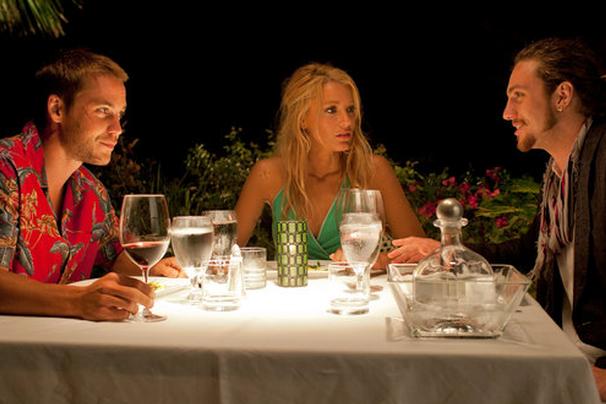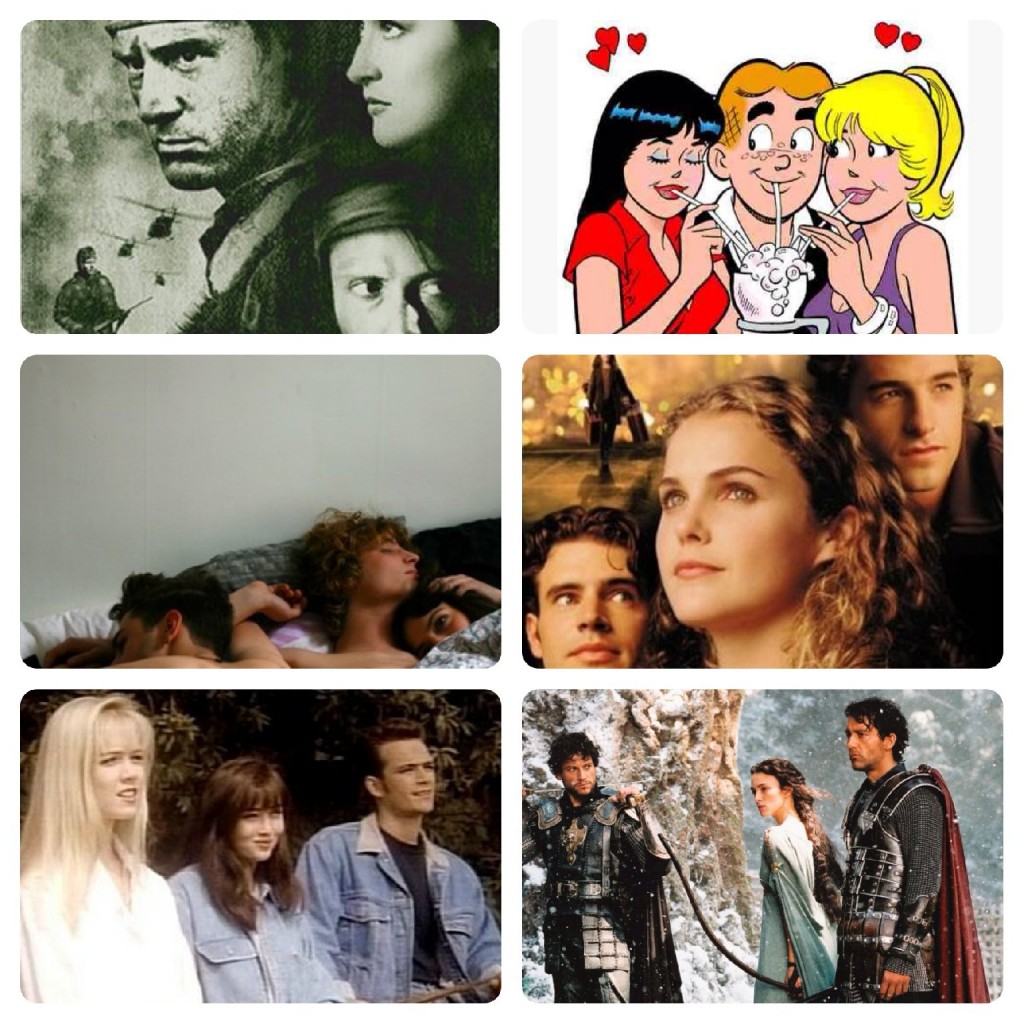
Anaïs, I don't know how to tell you what I feel. I live in perpetual expectancy. You come and the time slips away in a dream. It is only when you go that I realize completely your presence. And then it is too late.
-Henry Miller, in a letter to Anaïs Nin
Henry Miller could be talking about any kind of love in this letter to Anaïs Nin, but he's specifically considering the constantly unresolved and inexplicable nature of the love triangle. The love triangle does contain a perpetual expectancy, which is where the frustrating allure resides, and where the endless tension and narrative potential exist.
From Shakespeare to Gossip Girl, from Harold Pinter (whose real life affair inspired his play, Betrayal) to every recent vampire story, from Mount Olympus to Camelot, from Flaubert to Sex and the City, for over hundreds of years, from the highest of high brow culture to the lowest of low brow, everyone is riveted by the revelations and mysteries of this shape. The geometry of the two angles facing the third is a dire sort of math. When we choose one person over another, we choose one life over another, one self over another. Most of us, whether knowingly or not, have been one of these angles. Love is full of messy, maddening entanglements and the precise geometry of the love triangle is our narrative attempt to give gray areas a structure we can understand.
I’ve always relished a good love triangle, in real life, on screen, or on the page. From approximately age 18-20, I had two boyfriends. Love letters were written, tears shed, threats threatened, dramatic entrances and exits performed. Perhaps my two boyfriends and I allowed it to go on for so long because we knew that none of us would end up together in the end. Or maybe we secretly hoped it might finally settle into a verdict of one outcome or another. I had no exit strategy. Upon reflection, I’m honestly not sure what I hoped was going to happen. I think part of me actually believed I might just end up with both of them in some sort of other-worldly, non-sleazy, impossible polygamy, a blurry version of Jules et Jim (minus the car driving off the bridge), Butch Cassidy and the Sundance Kid (minus the shoot-out) or maybe even Oliver Stone’s Savages (minus the kidnapping, drug dealing and bloodshed). While the polyamorous vision my 19-year old self cultivated was definitely ridiculous, there's an undeniably charismatic equilibrium to the tension of three, a significant part of the triangle's draw. Not only are we choosing between opposites, we're creating a whole, albeit one we don't usually get to keep.
In Godard’s Band of Outsiders, while there's no overt romance, it's still the fact that there's three of them which creates the chemistry. Bertolucci's threesome in The Dreamers even mimics the Band of Outsiders trio and their charming run through the Louvre. The nearly identical scenes (check it out in the awesome split screen above) suggest the most ideal, irreverent qualities of the love triangle, along with the accompanying refusal of propriety. In Miranda July's short story "Roy Spivey," a significant and intimate (though unconsummated, and not exactly sexual) encounter with a man on a plane creates a lifelong, conceptual love triangle with everyone else the woman ever loves, and everything else she ever chooses. The moment with him creates a longing to define all else against. The love triangle is that too, a trope within which we can pick two opposites to define each other, weigh those options, feel the pleasant/unpleasant sensations of longing, uncertainty and meaning.



